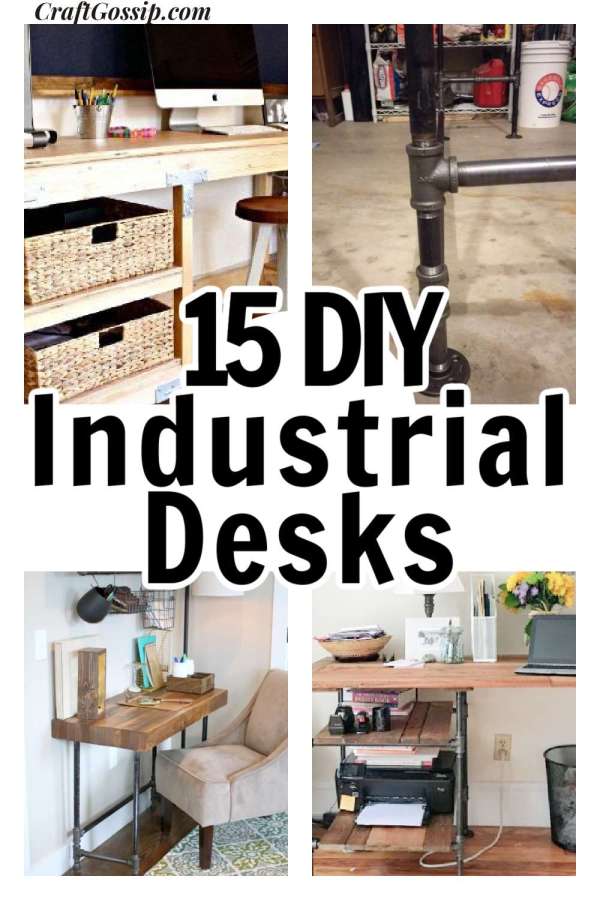
When it comes to decorating your home or workspace, there are endless styles to choose from. But if you’re looking for something unique and edgy, then industrial style may be just what you’re looking for. This style originated in New York City in the 1950s when artists and creatives began converting old factories and warehouses into living spaces. These spaces had exposed brick, concrete floors, and ductwork, and the furnishings were often repurposed industrial equipment.
I remember the first time I walked into one of these converted spaces in New York City. It was like nothing I had ever seen before. The roughness of the materials was balanced by the sleekness of the design. It was a perfect harmony of opposites. The industrial style quickly caught on, and today it’s a popular choice for home and office decor.
If you’re in the market for a new desk, why not try something with an industrial feel? Industrial-style desks are all about mixing raw, rough materials with sleek, modern lines to create a unique and edgy look. And the best part is that you can customize it to fit your exact needs and style. Whether you prefer the look of reclaimed wood, black iron pipe, or a combination of both, there’s a DIY industrial desk out there for you.
One of the great things about industrial-style furniture is that it doesn’t have to be expensive. In fact, you can create a stunning industrial-style desk on a budget. Here are some tips to help you get the look for less:
Look for materials at salvage yards or flea markets. You never know what you might find, and often you can get materials for a fraction of the cost of buying new.
Repurpose old materials. For example, an old door can make a great desktop, and old pipes can be used for the legs.
Use paint to transform materials. A coat of black or gray paint can give almost any material an industrial look.
Now that you have some budget-friendly tips, let’s take a look at 15 DIY industrial desks that are sure to inspire you.
DIY Workbench Inspired Desk – Jaime Costiglio
Easy Rustic Industrial Wall-Mounted Desk Build Plans – Houseful of Handmade
DIY Modern Desk – A Beginner Woodworking Project
DIY Piping Table – House by Hoff
Building a Custom Industrial Wooden Desk – The Reaganskopp Homestead
DIY Industrial 2×4 Computer Desk with Plans – The Handyman’s Daughter
Learn how to build a desk with x supports and I beams for the legs.
Saw Horse Desk How To – It All Started With Paint
How to Make a Metal Pipe Desk – Splendry
DIY Pipe Desk (a.k.a. the easiest desk EVER)
How to Build a Pipe Desk (DIY) | Family Handyman
How to Build a DIY Industrial Pipe Desk | The Spalty Dog
DIY Gorgeous Industrial Farmhouse Desk »
These DIY industrial desks range in difficulty, but all of them are achievable with the right tools and a bit of patience. Whether you’re a beginner or a seasoned DIYer, there’s a desk on this list that’s perfect for you.
Working with metal piping can be a great way to add an industrial touch to your DIY desk. However, it’s important to take the necessary safety precautions and use the right tools to avoid injury.
Here are some tips for working with metal piping:
Wear Protective Gear: When working with metal piping, it’s essential to wear protective gear such as gloves, safety glasses, and a mask. This will protect you from sharp edges and dust particles.
Choose the Right Tools: To work with metal piping, you’ll need a few basic tools such as a pipe cutter, adjustable wrench, and pipe threader. These tools will help you cut and shape the piping to fit your desk design.
Measure Twice, Cut Once: Always measure the metal piping carefully before cutting it. Once you cut it, you can’t undo it. Use a marker to mark the piping where you want to cut it.
Cut the Piping: The easiest way to cut metal piping is with a pipe cutter. It’s a handheld tool that works by rotating a cutting wheel around the pipe, creating a clean, even cut. Make sure the pipe cutter is securely fastened around the piping before cutting.
Sand the Edges: After cutting the piping, use sandpaper to smooth out any sharp edges. This will prevent injuries and make it easier to thread the piping.
Thread the Piping: If you plan on threading the piping, use a pipe threader to create the threads. This tool will create clean, precise threads that will fit perfectly with other pieces of piping.
Test Fit: Once you’ve cut and threaded the piping, do a test fit to make sure it fits together perfectly. Make any adjustments necessary before moving on to the next step.
By following these tips and taking the necessary safety precautions, you can work with metal piping and create a stunning industrial-style desk that will make a statement in any room.
Adding an industrial-style desk to your workspace can bring a unique and edgy feel to your home or office. And with these 15 DIY options, you can create a custom desk that fits your exact needs and style. With some budget-friendly tips and a bit of creativity, you can achieve the industrial look for less. So what are you waiting for? Get inspired and start building your own DIY industrial desk today!




